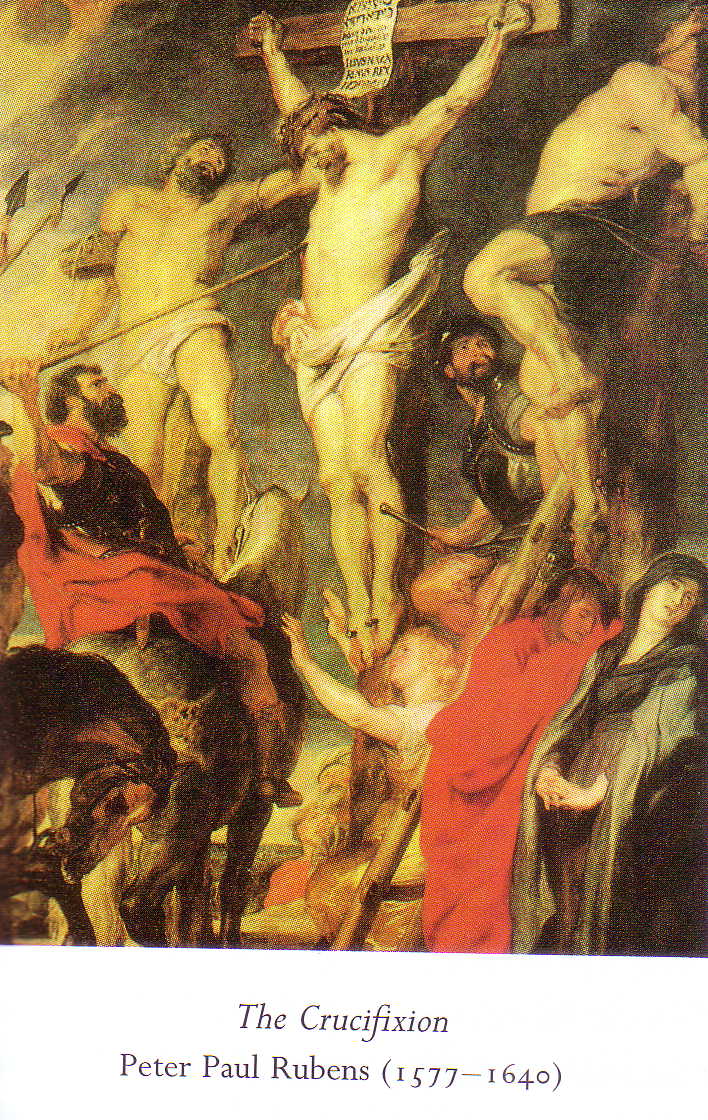 by Sachi Sri-Kantha, March 25, 2013
by Sachi Sri-Kantha, March 25, 2013
For multiple reasons, including the date of occurrence, calculating the exact age of Jesus at death, and the trauma inflicted to the body, scientists have been interested in the crucifixion of Jesus, which had been suggested to have occurred between AD 30 and 35. An associated event that preceded crucifixion of Jesus was the treason of Judas Iscariot, one of the 12 annointed disciples in the Ministry of Jesus.
Crucifixion of Jesus
Since reading the review article by Colin Humphreys and W.G.Waddington entitled Dating the Crucifixion, in the Nature journal (22/29, December 1983) thirty years ago, I have been fascinated with this theme. Their summary was as follows:
“The date of the Crucifixion has been debated for many years, but there has been no agreement on the year nor the day. Astronomical calculations have now been used to reconstruct the Jewish calendar in the first century AD and to date a lunar eclipse that biblical and other references suggest followed the Crucifixion. The evidence points to Friday 3 April AD 33 as the date when Jesus Christ died.”
Then, I read another contribution on this theme by John Pratt, which appeared in the Quarterly Journal of Royal Astronomical Society in 1991. According to Pratt, none other than the great Isaac Newton was the first to derive a date for the crucifixion of Jesus, by calculating when the crescent of the new moon was first visible in order to correlate the Judaean and Julian calendars. Newton did it 1733! He narrowed the years down to AD 33 and AD 34. Newton chose the Friday April 23, AD 34. But, it conflicts with the date of Paul’s conversion, which according to Pratt, Newton had not taken into consideration.
Nevertheless, there is no consensus. Few scholars (Depuydt, 2002; Lasker, 2004) have suggested an earlier date March 18, AD 29.
How old was the historical Jesus, when he died? Peter Calvocorresi, in his Who’s Who in the Bible (1987), records that, “Recent scholarship points to 12 BC as the [birth] year in question and this date coincides well enough with one other piece of historical evidence, the appearance of Halley’s comet. But other dates are seriously supported.” Thus, at the time of his death, Jesus would have been 44 or 45 years old, if he was crucified on AD 33. He would have been around 40 years, if he was crucified on AD 29.
Arch Traitor
Traitorology seems to be in fashion now. In 2010, the University of Pennsylvania Press published an edited book on traitors. Co-editors of this book are Sharika Thiranagama (daughter of Rajini Thiranagama) and Tobias Kelly. I’m currently preparing a review of this book now, which will be posted in this website. Before that, let us revisit the life of an arch traitor.
According to Harper’s Bible Dictionary (1985), there had been 12 personalities carrying the name Judas. Among these, the most notorious was Judas Iscariot (variant, Iskariot). Description about this guy in this dictionary is as follows:
“One of the twelve apostles, the son of Simon Iscariot. He is to be distinguished from the other apostle called Judas (John 14:22). The origin of the name Iscariot is debated. Some suggestions are: man (Hebrew, ish) of Karioth; the assassin (from Greek, sikarios); man from Issachar. Certainty is impossible, but if the first is correct, Judas was the only apostle from Judea.
Judas possessed a privileged position among the apostles as treasurer of the group (John 12:5-6, 13:29). His proximity to Jesus at the Lords’s Supper (John 13:21-26) also suggests this. Why he betrayed Jesus is uncertain. Some suggestions are that he did it (Mark 14:10-11) after being convinced that Jesus truly planned to die (Mark 14:3-9); that he did it for money (Matt. 26:14-16); or that he did it to help Jesus fulfill his purpose of dying! The last suggestion, however, is at odd with Jesus’ words in Mark 14:21. Despite a loving gesture by Jesus (John 13:26-27), Judas proceeded to betray his Lord.
What Judas betrayed is easier to answer. One suggestion is that he betrayed Jesus’ claim to be the Messiah, but his absence at the trial, when such witnesses were sought, refutes this. What he betrayed was how Jesus could be arrested privately (Mark 14:1-2). This he did in Gethsemane by singling him out at night with a kiss.
Upon reflecting over what he had done, Judas experienced remorse and sought to undo his evil deed (Matt. 27:3-4), but it was not possible. In sorrow he hanged himself (Matt. 27:5) and, falling headlong, his body split open and his bowels fell out (Acts 1:18).”
 The entry on Judas Iscariot in Peter Calvocoressi’s Who’s Who in the Bible (1987) offers the following details, which were not available in the above description. To quote,
The entry on Judas Iscariot in Peter Calvocoressi’s Who’s Who in the Bible (1987) offers the following details, which were not available in the above description. To quote,
“Judas of Kerioth, a place in Judaea – the apostle who betrayed Jesus to the priests for (according to Matthew) thirty pieces of silver. Jesus had finished washing his disciples’ feet and had sat down again to eat with them when he told them that one of them would betray him. John, prompted by Peter, asked Jesus whom he meant. Jesus replied that it was he to whom he would give a piece of bread dipped in the dish before them. He gave it to Judas, telling him to do quickly what he had to do, but none of the others followed his meaning. This is John’s account of the prologue to the betrayal. The other evangelists tell a similar story within there more elaborate accounts of the Last Supper. Judas brought a posse of soldiers and police to the garden called Gethsemane, a place frequented by Jesus on the Mount of Olives. In John’s version of the events Judas played no further part, but according to the other evangelists he betrayed Jesus with a kiss. All agree that there was a short scuffle in which one of Jesus’ party, identified by John as Peter, cut off the ear of a servant of the high priest. After Jesus had been condemned by the priests Judas repented, threw away the pieces of silver and hanged himself. The Judas tree (Cercis siliquastrum) is the tree on which he is said to have done this. The priests, his paymasters, recovered their money and used it to buy a field for the burial of strangers: from being known as the Potter’s Field it became the Field of Blood. Legend allows Judas one night a year out of hell to cool himself on an iceberg.”
Consulted Sources
Achtemeier, PJ (ed): Harper’s Bible Dictionary, Harper & Row Publishers, San Francisco, 1985.
Calvocoressi P: Who’s Who in the Bible, Viking, London, 1987.
Depuydt L: The date of death of Jesus of Nazareth. Journal of American Oriental Society, 2002; 122(3): 466-480.
Humphreys CJ and Waddington WG: Dating the Crucifixion. Nature, 1983; 306: 743-746.
Humphreys CJ and Waddington WG. Crucifixion date. Nature, 1990; 348: 684.
Lasker DJ: The date of the death of Jesus: Further reflections. Journal of American Oriental Society, 2004; 124(1): 95-99.
Pratt JP: Newton’s date for the crucifixion. Quarterly Journal of Royal Astronomical Society, 1991; 32: 301-304.